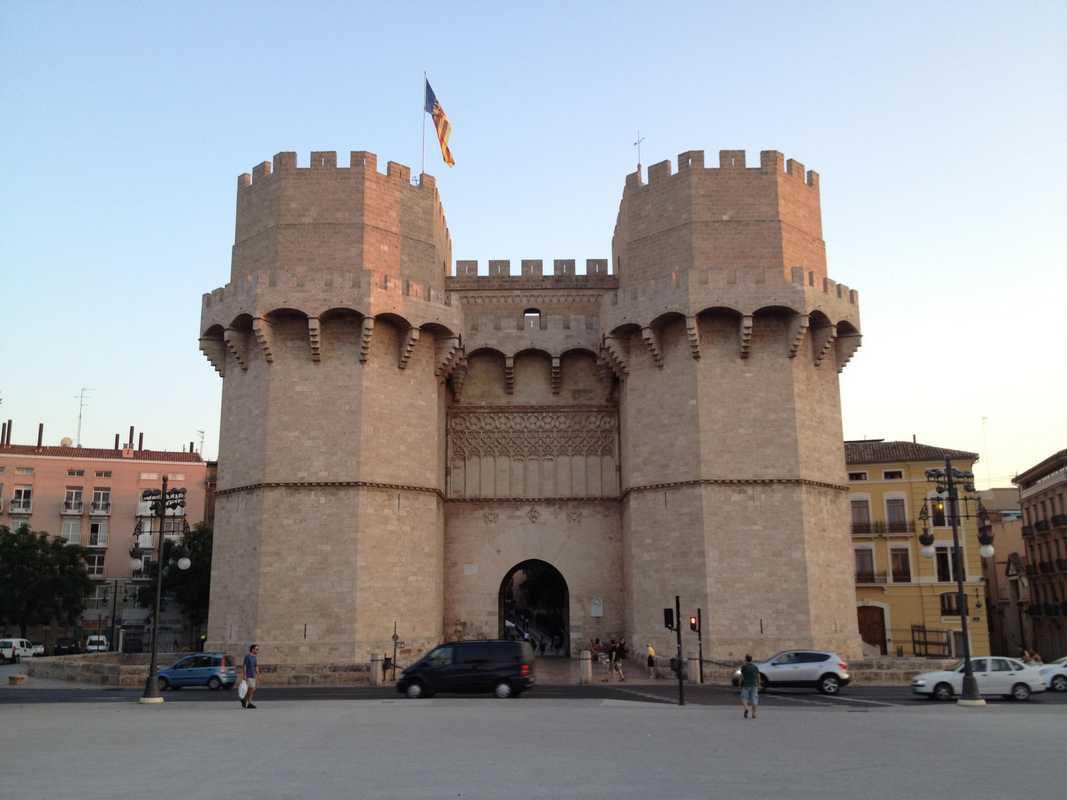Valencia is located on Spain’s eastern coast, at the mouth of the Turia River, right in the centre of the Gulf of Valencia. It is situated on the shores of the Mediterranean, a stretch of water which has gradually forged the city's character over the centuries.
Valencia’s geographical location makes it an excellent operational base to explore the rest of Spain. At just an hour and a half from Madrid by train, three hours from Barcelona by car, and with daily departures to the Balearic Islands. Bask in the city’s pleasant climate, stroll along its wide sandy beaches, just fifteen minutes from the centre of Valencia, catch a glimpse of its past, sample the local cuisine and discover the richness of its culture.
Valencia is easily accessible via its international airport, which is located just 8 km from the city centre. The airport is connected to 55 destinations around the globe through the 38 international airlines and low cost carriers.
Valencia International Airport
http://www.aena.es
Information: Phone +34 961 598 500
The approximate distance from the airport to the city center is 8 km/5 miles. You can reach the meeting venue:
By Metro:
- Line 5 / Line 3 from the Airport to Xàtiva station. Approximate journey time: 25 minutes. There you can take the bus n. 19 and go down after 2 stops at "Pl. de l'Ajuntament" which is 350m from the meeting venue (ADEIT). Alternatively you can walk for 850 m directly from the Xàtiva metro station to the meeting venue.
Visit www.metrovalencia.es to check the stops that will be most convenient for you, plan your journey in real time or check and download the timetable.
By Bus:
Fernanbus, Line 150 Valencia - Manises - Aeropuerto: Timetable here.
Airport-Valencia (Mercat Central): service from 5:25 until 22:00 (no service on Sunday) . Price: approx. €1,50. Approximate journey time: 40 minutes.
By Taxi:
Approx. cost airport-city centre: €25.
By Train
Spain's high-speed AVE train comfortably transports you from Madrid or Barcelona to the breathtaking Valencia.
- High-speed train from Madrid to Valencia is 1 hr 40 mins.
- High-speed train from From Barcelona to Valencia is 3.5 hours.
For more information about tickets and timetable please click here: www.raileurope.com
Valencia stands on the banks of the Turia River, located on the eastern coast of the Iberian Peninsula and the western part of the Mediterranean Sea, fronting the Gulf of Valencia. At its founding by the Romans, it stood on a river island in the Turia, 6.4 kilometres (4.0 mi) from the sea. The Albufera, a freshwater lagoon and estuary about 11 km (7 mi) south of the city, is one of the largest lakes in Spain. The City Council bought the lake from the Crown of Spain for 1,072,980 pesetas in 1911,[8] and today it forms the main portion of the Parc Natural de l'Albufera (Albufera Nature Reserve), with a surface area of 21,120 hectares (52,200 acres). In 1976, because of its cultural, historical, and ecological value, the Generalitat Valenciana declared it a natural park. [source: Wikipedia]
CLIMATE
Valencia has a subtropical Mediterranean climate with short, very mild winters and long, hot and dry summers. In September the avarage temperature is 23.5 °C with maximum 28 °C during day and minimum 19 °C at night.
FOOD
Valencia is famous for its gastronomic culture. The paella (a simmered rice dish with meat (usually chicken or rabbit) or seafood) was born in Valencia; Other traditional dishes of Valencian gastronomy includes "fideuà", "arròs a banda", "arròs negre" (black rice), "fartons", "bunyols", the Spanish omelette, "pinchos" or "tapas" and "calamares"(squid).
Valencia was also the birthplace of the cold xufa beverage known as orxata, popular in many parts of the world, including the Americas. [source: Wikipedia]
Founded by the Romans (in 138 BC), Valencia has been the home of many cultures over its history: Romans, Visigoths, Moors and the Aragonese all made the city an important cultural and financial centre.
In the year 1094, Rodrigo Díaz de Vivar, called El Cid Campeador, conquered Valencia on behalf of the Christians, but the city later fell to the Almoravids in 1102. Following the Moorish domination, it was in 1238 that James I of Aragon finally reconquered the city, and founded the Kingdom of Valencia, with its characteristic legislative privileges (Furs).
During the 15th and 16th centuries, Valencia became one of the major economic powers on the Mediterranean seaboard. It was the time of the Valencian siglo de oro (Golden Age), which was characterized by splendour in the arts at the hands of Joanot Martorell (author of Tirant lo Blanc, the first modern European novel), Ausias March, Roig de Corella, Isabel de Villena, Jordi de Sant Jordi and Jaume Roig, among others.
During the War of Spanish Succession, Valencia sided with archduke Charles of Austria, and after the victory of the Bourbons at the Battle of Almansa (April 1707), Phillip V abolished the local privileges, or fueros. In 1874, Alfonso XII was proclaimed constitutional king at Sagunto, north of Valencia.
When democracy was restored, the Land of Valencia was given its present Autonomous Statutes in 1982. The history of the city, now the capital of the Land of Valencia, is both rich and varied, providing a patrimony that has converted it into one of the major cities in Spain on both cultural and economic levels.





























